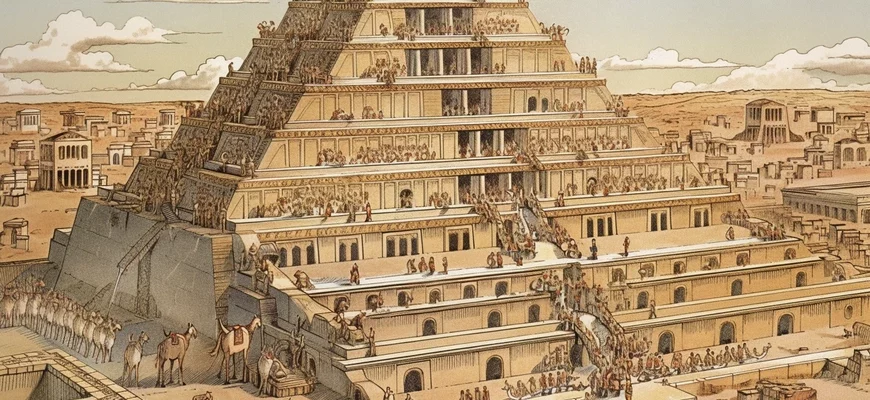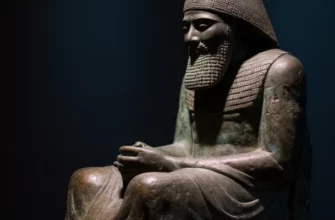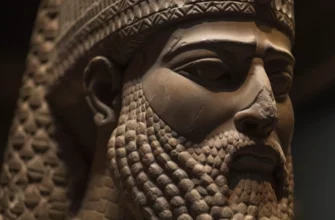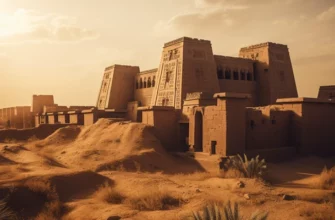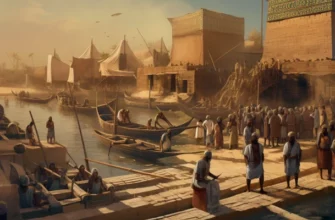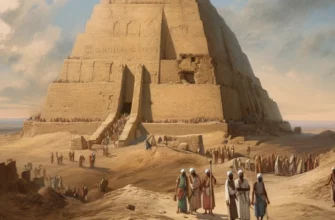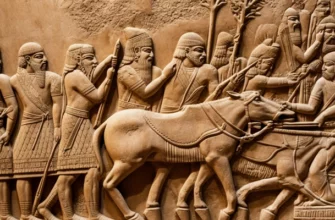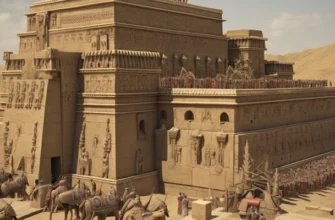Sumer was a civilization that existed about 4,000 years ago. The social structure of its society was divided into the upper class, the middle class, and the lower classes. The upper class consisted of princes, priests, and warriors. The middle class consisted of artisans, merchants, and farmers, who played an important role in the economy. The lower classes included slaves and the landless. Craftsmen were a key element in Sumerian society, producing various items such as weapons, furniture, and tableware. Merchants played an important role in trade with other civilizations. Peasants grew grain and raised sheep, providing food for society. Studying the social structure of Sumerian society is important for understanding social processes in human history.
- Overview of the social structure of Sumerian society
- Description of social classes in Sumerian society
- The upper class
- Middle class
- Lower classes
- The role of artisans, merchants, and peasants in the social structure
- Description of the role of craftsmen in society
- Description of the role of merchants in society
- Description of the role of peasants in society
- Conclusions
Overview of the social structure of Sumerian society
The social structure of Sumerian society consisted of the upper class, the middle class, and the lower classes. The upper class included princes, priests, and warriors who owned land and controlled state resources. The middle class consisted of artisans, merchants, and farmers, who played an important role in the economy and cultural life of Sumerian society. Artisans were a key element, as they produced weapons, furniture, and tableware. Merchants traded with other civilizations, which contributed to the development of the economy and cultural exchange. The lower classes included slaves and the landless. The social structure of Sumerian society was quite complex and hierarchical, reflecting the different social functions and roles of people in that society.
Description of social classes in Sumerian society
The social structure of Sumerian society was complex and hierarchical, consisting of the upper class, the middle class, and the lower classes. The upper class consisted of princes, priests, and warriors who owned land and had access to state resources. The middle class consisted of artisans, merchants, and farmers, who played important economic and cultural roles in society. Artisans produced weapons, furniture, and tableware, while merchants traded with other civilizations. The lower classes consisted of slaves and the landless. Slavery was widespread in Sumerian society and was used for the production of goods, agriculture, and other work. Overall, the social classes in Sumerian society had different roles and functions, which contributed to the development of the economy and culture of this civilization.
The upper class
The upper class of Sumerian society consisted of princes, priests, and warriors who owned large tracts of land and controlled state resources. Princes owned land and managed local government institutions such as courts and administrations. Priests had a great influence on religious life and could act as intermediaries between the gods and humans. Warriors ensured the security of the country and defended its borders. These classes were at the top of the hierarchy and had a significant influence on the politics and economy of Sumerian society.
Middle class
The middle class of Sumerian society consisted of artisans, merchants, and farmers, who played important economic and cultural roles in society. Artisans produced a variety of goods, such as weapons, furniture, and tableware, which were needed to meet the needs of the upper class. Merchants traded with other civilizations and brought new ideas and technologies to Sumerian society. Farmers grew food crops and provided society with the necessary products. The middle class played an important role in the economic and cultural development of Sumerian society.
Lower classes
The lower classes of Sumerian society consisted of slaves, the unemployed, and hired craftsmen. Slavery was widespread in Sumer, with slaves being used as labor in agriculture and urban construction. The unemployed and hired craftsmen had no stable sources of income and were dependent on the upper classes of society. The lower classes did not have a significant influence on the politics and economy of Sumerian society, but they played an important role in providing labor and various services.
The role of artisans, merchants, and peasants in the social structure
Artisans, merchants, and peasants played an important role in the social structure of Sumerian society. Craftsmen produced various goods, such as weapons, furniture, and tableware, which were needed to meet the needs of the upper classes. Merchants traded with other civilizations and brought new ideas and technologies to Sumerian society. Peasants grew food crops and provided society with the necessary products. As a result of their labor, wealth accumulated and the economy developed, which contributed to the social development of Sumerian society. In addition, their knowledge and skills were important for ensuring cultural and technical progress in Sumerian society.
Description of the role of craftsmen in society
Craftsmen played an important role in the social structure of Sumerian society. They were highly valued for their knowledge and ability to make various items that were necessary to meet the needs of the upper echelons of society. Craftsmen made weapons, furniture, tableware, jewelry, and other items that were necessary for everyday life. They also made items that were used in religious rituals and festivals.
Craftsmen had their own guilds and organizations, which included workshops where they trained younger craftsmen. They were members of the middle class of society, but some craftsmen could become very wealthy and influential. Craftsmen had a great influence on the culture and technological progress of Sumerian society. They were the first people to understand metalworking technology, which allowed metallurgy to develop and enrich society. Overall, artisans played an important role in the development and prosperity of Sumerian society.
Description of the role of merchants in society
Merchants played an important role in the social structure of Sumerian society. They were the ones who facilitated trade and carried out commercial transactions between different cities and peoples. Merchants traded in gold, silver, fabrics, livestock, wine, and other goods that were in demand in other parts of the world. They also acted as intermediaries between the upper echelons of society and artisans, supplying them with the necessary materials and tools.
Merchants had their own organizations and guilds that protected their interests and promoted trade. They possessed large sums of money and property, which allowed them to become wealthy and influential in society. Some merchants held high positions in the government and were close to the upper echelons of power. They had a great influence on economic development and trade in Sumerian society.
All these factors allowed merchants to occupy an important place in the social structure of Sumerian society and become one of the most important figures in the development of the economy and trade.
Description of the role of peasants in society
In Sumerian society, peasants were one of the largest social groups. They worked the land and provided grain and other food products. Peasants were dependent on the upper echelons of society, who owned the land and imposed taxes on them. However, there were also peasants who owned their own land and had a certain status in society. In addition to working the land, some peasants were engaged in crafts, which supplemented their income. In general, the role of peasants in Sumerian society was to provide food for the population and develop the economy, but they did not have a significant influence on politics and decision-making in society.
Conclusions
The main conclusions about the social structure of Sumerian society are that it was a society with a high degree of hierarchy and social differentiation. The upper echelons of society consisted of rulers, priests, and military leaders, the middle class consisted of craftsmen and merchants, and the lower classes were represented by peasants and slaves. Craftsmen, merchants, and peasants played an important role in the development of the economy and in providing food for the population.
Studying the social structure of Sumerian society is important for the present day, as it allows us to better understand the processes of social differentiation and hierarchy in human history. Studying the social structure of Sumerian society can also be useful for politicians working to develop modern societies and ensure social justice, as the experience of the past can help to understand contemporary social problems and ways to solve them.
